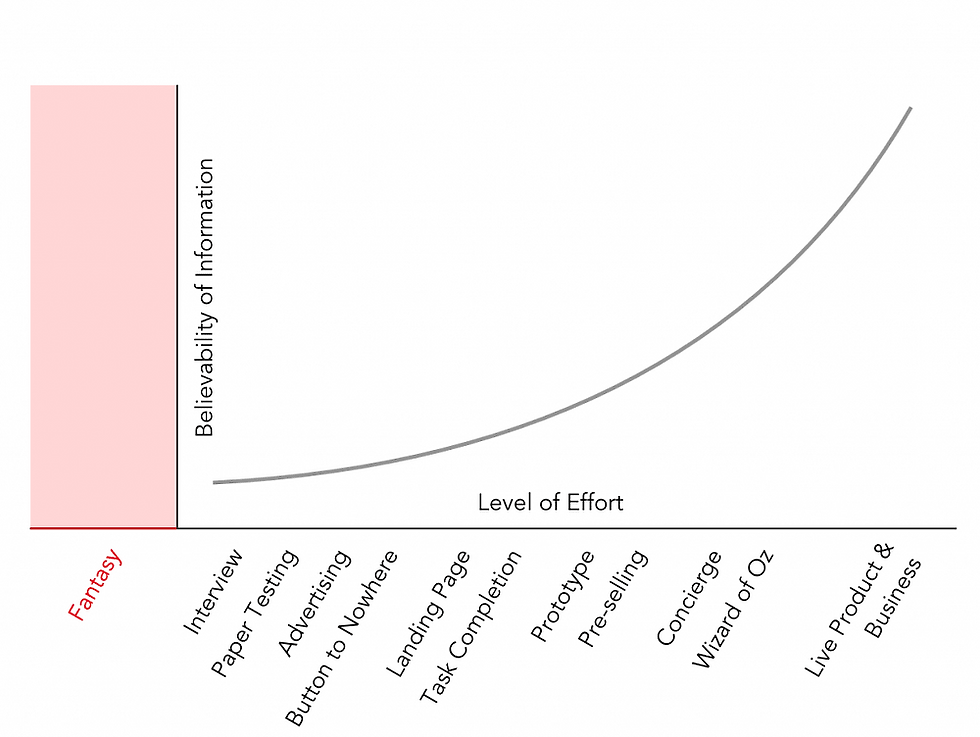Product Vision and the Lean Startup
- Alex Reizer

- Apr 13, 2022
- 3 min read
Updated: Jun 5, 2022
Vision. It all starts with it. Your "sales pitch", your northern star, how you get funding and motivate everyone to get on board. Let me tell you a story. Back in 2020, when the pandemic was getting ready to toss all our plans aside, the product teams I lead were preparing for Euro2020. We were getting ready to create a great experience, building a "companion app" for soccer fans around the world. But then, Euro2020 was cancelled and we were devastated. I had to make a decision: we had talented cross-functional product teams (backend, frontend, design, QA, scrum master and product owner) with "nothing" to do, and in risk of being "let go". Instead of doing the "safe" thing, we've put into action another plan. I treated it like we were a startup, not a development team within a company. We came up with a new idea, and we pitched it to the company.
Pivot.
As a B2C company focusing on sport, our vulnerability was clear. What if instead, we could kill the proverbial "2 birds with 1 stone"? We could retain our great teams, and we could build a B2B product, much less susceptible to things like the global pandemic? We'd be able to create a stable stream of revenue, while building something we needed anyway + "dogfooding" our product all the way. That's what we did. We set out to build a world-class decoupled CMS, as a B2B SaaS product, for other companies like us. Decoupled meant it could connect to any front (web application, or mobile). From the very start, that was the vision I shared with the teams.
We (the developers, and the product owners) did extensive research, looked at our competitors, potential customers, and the needs/opportunities we had. It was a joint effort, because we either all succeeded, or all failed. We had some great existing assets. For example, our easy to use drag & drop blocks UI meant you didn't have to be a designer to create or edit good looking responsive sites, and the advanced configurations meant you could turn any piece of content into any type of design on frontend, with ease. We needed to lose the unnecessary, retain the relevant, and build something that would provide value to our first customer - our own company, and to others like it - building sites at scale, and needing to make a lot of changes, on a daily basis, quick. We weren't perfect. We had to build something we never did, at a standard we never did. That's where we made a mistake. Our MVP, instead of being minimal, used to power new sites, became something that could instead be used to fully migrate one of our existing web applications, with a lot of its complexity. We realized that, and cut down on the functionality. It still took us a year from idea to launch. We corrected, and followed our vision, albeit in a different way than that one originally foreseen. Looking back, I wish I read these words sooner: "extremely fast cycle time, a focus on what customers want (without asking them), and a scientific approach to making decisions." We were very used to running in sprints for all our other products, building them iteratively and incrementally, checking what works and what doesn't. But for this completely new venture, we did a lot more research in advance, we baked in a lot more functionality upfront, and we added a large migration on top of it all. It worked, but I think we could have gone about it in a better way. For example, we could have launched with only 1 type of pages. We could have launched with less widgets. We could have put the migration completely aside. Coulda, woulda, shoulda. I want to end this story in the following way:
It doesn't matter when you acquire new knowledge, it just matters if you use it appropriately from that moment on.
Your previous experience got you to where you are, to a point where each gap was filled. Don't feel bad it took you that long, you were busy doing something else of value, earning other experience.
Remember the joy of acquiring and using new knowledge. It's repeatable.
Try any version of a product vision board (e.g. the below, and read more about it here) and talk to me to learn more about creating a cohesive product vision for your product.




Comments